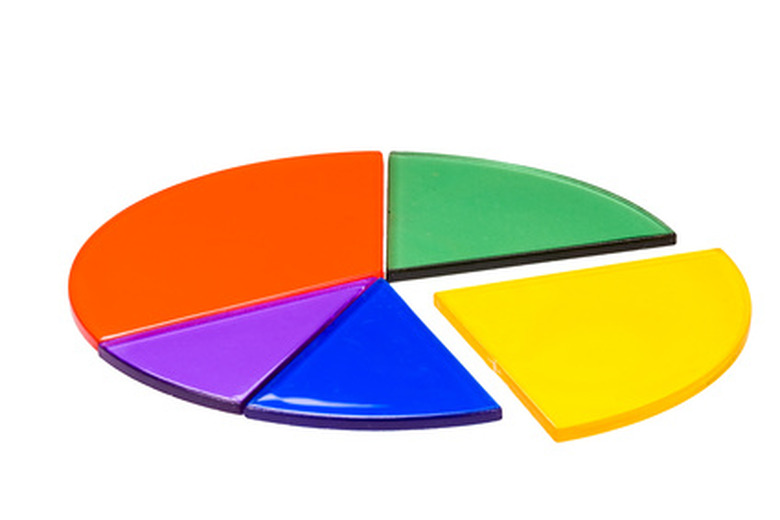How To Estimate Sum & Differences With Fractions
Estimation is an important skill in math and in everyday life. Adding and subtracting fractions can be complicated because they are not whole numbers; they represent a portion of a whole. Knowing how to estimate the sum or difference of two fractions can save you a lot of work and at the same time provide an approximate answer.
Step 1
Know the rules of rounding a fraction to the nearest 1/2. According to these rules, the fraction will be rounded to 0, 1/2 or 1. A fraction whose value is less than 1/4 will be rounded down to 0, a fraction greater than or equal to 1/4 and less than or equal to 3/4 will be rounded to 1/2 and a fraction greater than 3/4 will be rounded to up 1. For example, 4/16 rounds to 1/2, 3/16 rounds to 0 and 13/16 rounds up to 1.
Step 2
Convert the fractions and then add or subtract. If the math problem is 9/16 + 5/12, by rounding the fractions to the nearest 1/2, your new math problem becomes 1/2 + 1/2, which equals 1. The fraction 9/16 rounds to 1/2 because it is less than 12/16 (3/4) and greater than 4/16 (1/4). The fraction 5/12 rounds to 1/2 because it is less than 9/12 (3/4) but greater than 3/12 (1/4). When subtracting the fractions, 1/2 (9/16) – 1/2 (5/12) = 0
Step 3
Solve the full problem to show how close you were to the exact answer. If the problem was done without estimating, you would convert 9/16 to 27/48 and 5/12 to 20/48 so that the fractions have the same denominator. Then 27/48 + 20/48 = 47/48. The fraction 47/48, which is equivalent to 0.979, is close to 1. Subtraction is done the same way. 27/48 – 20/48 = 7/48 (0.145). The result is close to 0.
TL;DR (Too Long; Didn't Read)
Break the number in the denominator (bottom number) up into fours. This will help in calculating if the numerator (top number) is more or less than a quarter, half and three quarters of the denominator.
Warning
An estimate is an approximate calculation, so not everyone will be close in comparison to the exact answer.
Cite This Article
MLA
Jones, Sharmaine. "How To Estimate Sum & Differences With Fractions" sciencing.com, https://www.sciencing.com/estimate-sum-differences-fractions-7762720/. 24 April 2017.
APA
Jones, Sharmaine. (2017, April 24). How To Estimate Sum & Differences With Fractions. sciencing.com. Retrieved from https://www.sciencing.com/estimate-sum-differences-fractions-7762720/
Chicago
Jones, Sharmaine. How To Estimate Sum & Differences With Fractions last modified August 30, 2022. https://www.sciencing.com/estimate-sum-differences-fractions-7762720/

